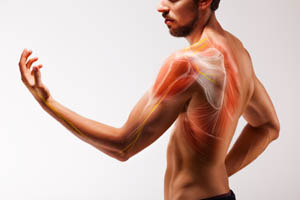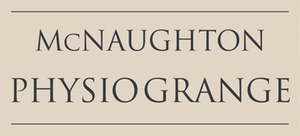The Fantastic Shoulder Joint
Shoulder joints are amazing joints. They allow us to do so much from reaching up to the top shelf to extracting our wallet from our back pocket, from stretching forward to open a door to stretching back for that oh so satisfying scratch of the itch between our shoulder blades.  Without the incredible mobility of the shoulder joint we would not be able to do so much with our hands, making life difficult. However, we tend not to appreciate just how good our shoulders are until they develop problems. About 10% of people will have one or more episodes of shoulder pain during their lifetime.
Without the incredible mobility of the shoulder joint we would not be able to do so much with our hands, making life difficult. However, we tend not to appreciate just how good our shoulders are until they develop problems. About 10% of people will have one or more episodes of shoulder pain during their lifetime.
Anatomy
The main joint at the shoulder is the Gleno-Humeral joint. This is the ball and socket joint between the head of the Humerus, our upper arm bone, and the Glenoid part of the shoulder blade (Scapula). As the Scapula can move over our chest wall, muscle control is very important. There are also two other small joints where our collar bone (Clavicle) joins on to our shoulder blade and breast bone known as the Acromio-Clavicular and Sterno-Clavicular joints.
The Gleno-Humeral joint is surrounded by a tough fibrous sleeve, called the capsule, which contains fluid to nourish and lubricate the joint. A group of tendons, known as the Rotator Cuff, then make a cloak around the capsule and they help to both move the joint and hold it together. Between the rotator cuff tendons and the bony Acromion lies a bursa – a fluid filled sack which cushions the cuff and prevents it rubbing on bone.
What can cause shoulder pain?
Not every pain felt in the shoulder is coming from the shoulder. Problems with the neck can refer pain to the shoulder. If your shoulder pain continues down your arm into your hand, or if you have tingling in your fingers then the problem may well stem from your neck. Also, pain around your shoulder blade is likely to stem from your neck.
Pain from the shoulder joint is often felt over the front of the shoulder or in the upper arm and can be due to:-
- Swelling of the bursa, known as subachromial bursitis.
- Damage to the rotator cuff tendons – tendinopathy.
- Muscle weakness or imbalance resulting in poor control of movements and pain.
- Capsulitis– also known as “Frozen Shoulder”.
- Poor posture restricting movement of the scapula.
Can physiotherapy help?
Yes! The vast majority of shoulder problems will benefit from Physiotherapy. Your Physio will perform a detailed assessment of your condition and then put together a treatment programme tailored to your needs. Home exercises can ease stiffness in the shoulder, can strengthen weak muscles and can improve both shoulder and spinal posture. Manual techniques such mobilisations may be used to stretch tight structures and improve movement. Research shows that people who work hard to keep muscles strong and maintain shoulder movements make a quicker and more complete recovery.
Do not despair if your shoulder becomes painful – there is a lot that can be done to help.

